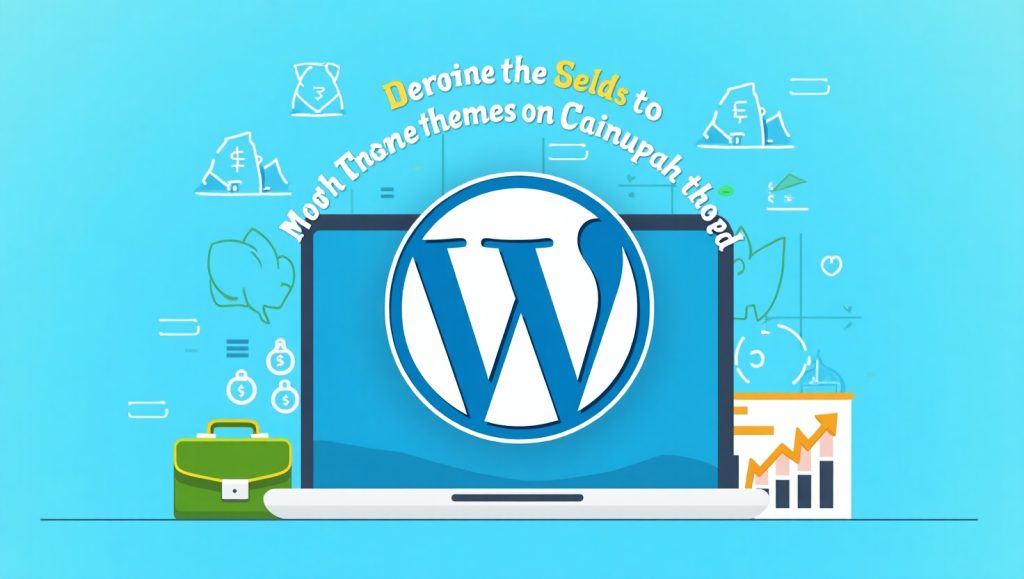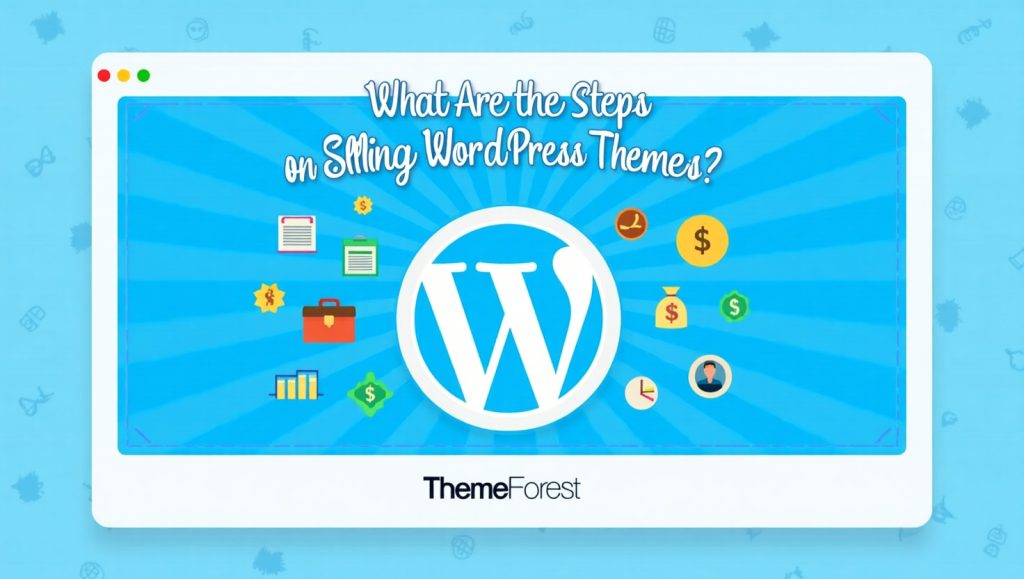Selling WordPress themes on ThemeForest can be a fantastic business strategy for developers and designers looking to monetize their skills and reach a larger audience. ThemeForest is an Envato Market website and is among the largest resources for digital assets, and getting accepted for listing on ThemeForest can be an interesting way to gain visibility and exposure for your theme. However, you will need to be prepared for the submission and approval process, as it is a rigorous process to get a theme on the marketplace. The theme you submit must be very unique, well-designed, high-quality, feature-rich, and code and documentation must meet the standards of ThemeForest.
In this article, we will outline how to sell WordPress themes on ThemeForest from start to finish, including preparation for the theme, presentation of the theme, marketing, and promotion. Knowing what to prepare can be very advantageous to an independent developer or agency looking to take that passive income.
Research the ThemeForest Marketplace

Before jumping into development, it’s important to understand what the marketplace expects and what buyers are looking for.
Analyze Existing Top-Selling Themes
Go through the best-sellers in your niche. Look at how they’re designed, how their demos work, and what features they offer. Take note of things like:
- Design trends
- User experience
- Types of demos (niche vs. multipurpose)
- Support and update frequency
This research helps you see what works and what doesn’t. Try not to steal ideas but focus on the voids in the market or ways to improve upon existing ideas. For example, there are a lot of high-selling themes that are for supporting mobile-friendly web design. Being mobile-friendly so important for user experience and SEO.
Understand ThemeForest Requirements
Understand ThemeForest Requirements
Before you submit your WordPress theme to ThemeForest, it’s important to know their requirements and expectations. ThemeForest does not just approve any themes — they operate like any marketplace that holds their sellers to a standard to ensure that buyers are getting secure, optimized, and performing digital products.
If you plan to get rejected or have a long waiting period for approval, then don’t read any further and just submit. Just kidding, but you should treat this submission correctly in order to be successful.
Theme Coding Standards
One of the main focus areas of ThemeForest reviewers is code quality. HTML, CSS, JavaScript, and PHP must be coded to best practices. Any WordPress theme submitted, must pass tests using the Theme Check plugin, and follow the guidelines of WordPress.org — even if you aren’t selling there.
Here are a few key technical standards you must meet:
- No inline styles or scripts unless necessary
- Proper use of WordPress functions and hooks
- Escaping and sanitizing all user inputs and outputs
- Enqueueing scripts and styles the right way (no hardcoded
<link>or<script>tags)
Failing to meet these can result in a hard rejection, meaning you can’t resubmit the same item unless it’s completely overhauled.
Design and User Experience Guidelines
Your design should be current, clean, and eye-catching. Reviewers on ThemeForest will look at design layout, white space, typography, color contrast and overall usability. It’s not enough to just simply design a beautiful homepage, your theme must be cohesive and meticulously crafted on every page/feature of the theme. Responsiveness is also non-negotiable, your theme should be responsive to devices of all screen sizes and fluid in how it responds.
Themes that implement mobile-friendly web design concepts like flexible images, touch-friendly navigations and fluid grids, have a higher chance of ThemeForest review approval and higher buyer satisfaction.
Licensing and Asset Usage
Use only assets (fonts, images, scripts) that are licensed for commercial use. If you are using third-party plugins or design assets, you must be sure that their licenses allow redistribution and often have documentation to prove it.
ThemeForest usually favors free GPL or GPL compatible assets or assets with extended commercial licenses. That way, you won’t run into any legal trouble with you or your buyers.
Focus on Clean Design and Usability
A successful theme is a modern clean attractive design for your target market. Make intelligent use of white space, use grids, and typography. Ensure that your theme is responsive across many screen sizes and devices.
Remember, usability is just as important as aesthetic beauty; design clear navigation, intuitive layout structures, and accessibility features. A more user-friendly theme will get better reviews and better sales.
Develop with Performance and Standards in Mind

Use best practices in coding. Your theme should load fast, avoid bloat, and follow WordPress development standards. Test your theme with:
- Theme Check plugin (for WordPress compliance)
- GTmetrix or PageSpeed Insights (for speed)
- Browser testing tools (for cross-browser compatibility)
Also, optimize for SEO and accessibility. These are features many buyers now expect in professional themes.
Prepare Documentation and Support
High-quality support and clear documentation increase buyer trust and reduce refund requests.
Write Clear and Helpful Documentation
Create a PDF or online guide that walks users through:
- Theme installation
- Demo import
- Customization options
- Common troubleshooting steps
You can also include video tutorials to make your documentation even more user-friendly. Good documentation not only improves customer experience but also reduces the number of support queries.
Plan Your Support Workflow
ThemeForest provides an option for support period of 6 months with your theme, we allow the buyer to purchase an extension of that support period, be prepared to answer (and sometimes fix) issues very quickly and very professionally. You can also use tools like Freshdesk or Help Scout to manage support tickets in an organized way.
Providing excellent support will reflected in your reviews which will further increase your visibility and sales.
Create an Attractive Demo and Preview
Your demo site is the first impression potential buyers get. A great demo can significantly impact your conversion rates.
Build a Live Demo Site That Sells
Your live preview should show off all the theme’s features, layouts, and niche demos (if applicable). Make navigation simple, and clearly display:
- Home page variations
- Header/footer styles
- Blog, portfolio, and shop pages
- Interactive elements like sliders or animations
Use clear, descriptive page names. Ensure that your preview site is fast and mobile-optimized. Many sellers also include a “Theme Options” panel in the demo to showcase customization features.
Use Attractive Graphics and Copy for Your Theme Page
Your theme page on ThemeForest needs to grab attention. Include:
- A bold feature image
- Bullet points of core features
- High-quality screenshots
- A changelog and FAQ section
Make your descriptions persuasive but honest. Highlight features like responsive web design or compatibility with major plugins (like WooCommerce or Elementor).
Submit Your Theme for Review
Once everything is polished, you’re ready to upload your theme to ThemeForest for review.
Double-Check Before Submission
Make sure you’ve:
- Validated your HTML/CSS
- Tested for WordPress standards
- Included a working installable ZIP
- Added licensing for all third-party resources
- Written clear documentation
Create a preview image (590x300px) and feature image for the listing page. Then, upload your files through the Author Dashboard.
What Happens After Submission
After submission, your theme goes through an initial quality check. If it passes, it moves to a full review. This can take several days or even weeks depending on the queue.
You may get one of the following responses:
- Hard rejection: Major issues; needs rework before resubmitting
- Soft rejection: Minor fixes required; you can resubmit after changes
- Approval: Your theme goes live and is ready for sales!
.
Collect Feedback and Update Regularly
Stay engaged with your customers. Reply to comments, fix bugs quickly, and roll out regular updates to add new features or support new WordPress versions.
Frequent updates and good customer service not only improve your reputation but also boost your theme’s ranking on ThemeForest.
Final Thoughts
Selling themes on ThemeForest is a rewarding experience, both creatively and financially. If you follow these steps, and put in the hard work – researching the market, developing a unique theme, submitting and promoting your theme – you are in a great position for success. Keep learning, responding to user feedback, and keep up to date with new features in WordPress and designs trends. And if you want to establish yourself before and outside of ThemeForest, consider developing a website design portfolio to highlight your work.
Want to see this process in visual form, or need to a guide to set up your firs demo website. I can also make you a step-by-step visual or infographic, just let me know!